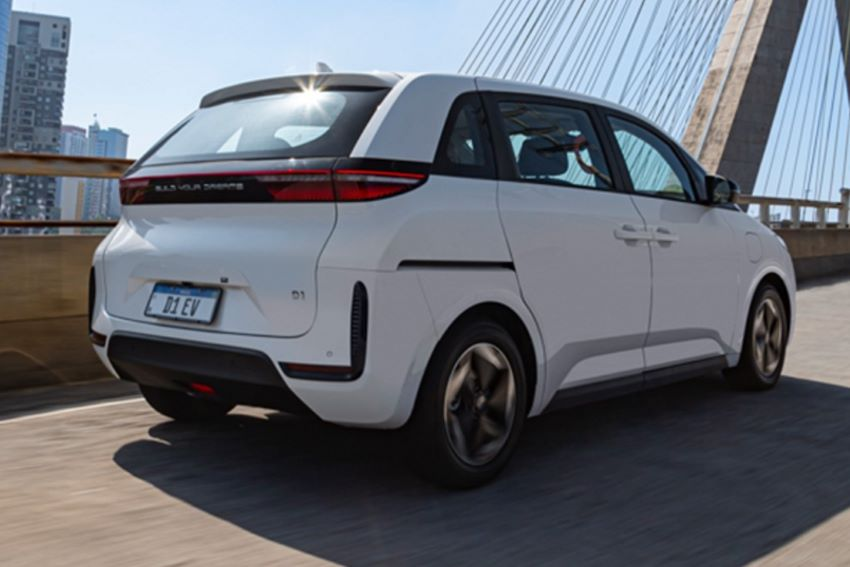In 2023, the electric vehicle (EV) industry is buzzing with innovations, but one development stands out: BYD’s Blade Battery. This groundbreaking technology promises not only to enhance the efficiency of electric vehicles but also to revolutionize EV safety. As the demand for reliable and secure energy storage increases, BYD’s new battery technology is leading the charge. In this article, you’ll discover how the Blade Battery is setting new safety standards, its impact on the EV market, and how it compares to other battery technologies.
What is the Blade Battery?
A New Era for Battery Safety
BYD, a leader in the EV sector, introduced the Blade Battery in 2020, but its impact is truly being felt in 2023. Unlike traditional lithium-ion batteries, the Blade Battery employs a unique design that enhances safety and efficiency. The main keyword here is “EV safety,” and it’s no surprise why this battery is at the forefront of the conversation.
- Flat and Long Design: The Blade Battery is named for its shape, which is designed to maximize space utilization and thermal management.
- Thermal Stability: One of the most critical features is its ability to withstand high temperatures without catching fire, a significant improvement over traditional batteries.
- Improved Safety Standards: It has passed rigorous safety tests, including the nail penetration test, which is known to be the most stringent for batteries.
According to Electrek, this innovation reduces the risk of battery fires, a concern that has plagued EVs in recent years.
How Blade Battery Works
The Blade Battery redefines battery architecture with its use of lithium iron phosphate (LFP) chemistry. This chemistry is known for its safety benefits and cost-effectiveness.
- LFP Chemistry: Unlike nickel-cobalt-aluminum (NCA) or nickel-manganese-cobalt (NMC) chemistries, LFP is less prone to overheating and is more environmentally friendly.
- Enhanced Energy Density: Despite its safety features, the Blade Battery does not compromise on energy density, offering competitive range capabilities for EVs.
- Durability and Longevity: The structure allows for more cycles, increasing the battery’s lifespan and making it a sustainable choice for energy storage.
The Impact of Blade Battery on the EV Market
Setting New Benchmarks
The introduction of the Blade Battery is not just an incremental improvement; it sets a new benchmark in the EV industry.
- Adoption by Major Brands: Companies like Tesla and Volkswagen are taking note, with some models already integrating LFP technology.
- Market Expansion: With its cost-effectiveness and safety, the Blade Battery is expected to drive the adoption of EVs in emerging markets where safety and cost are significant concerns.
- Competitive Edge: BYD’s commitment to pushing boundaries has given it a competitive edge, with Bloomberg Green reporting a 30% increase in battery orders since its introduction.
Comparison with Other Batteries
How does the Blade Battery stack up against other popular battery technologies?
| Feature | Blade Battery (LFP) | NCA | NMC |
|---|---|---|---|
| Safety | High | Moderate | Moderate |
| Energy Density | Moderate | High | High |
| Cost | Low | High | Moderate |
| Thermal Stability | Excellent | Moderate | Moderate |
| Environmental Impact | Low | High | Moderate |
Practical Applications and Benefits
Where to Buy and How to Charge
- Purchase Options: BYD’s vehicles equipped with Blade Batteries are available globally, with China and Europe being key markets. In the U.S., BYD is expanding its footprint with partnerships.
- Charging Tips: The Blade Battery supports fast charging, allowing it to reach 80% in less than 30 minutes, making it suitable for long-distance travel.
Recommendations for Consumers
For potential EV buyers, the Blade Battery offers several advantages:
- Safety First: If safety is your priority, the Blade Battery should be at the top of your list.
- Cost-Effective Choice: With lower production costs, vehicles equipped with Blade Batteries may offer better value.
- Environmentally Friendly: Opting for an LFP-based vehicle contributes to a lower carbon footprint.
Conclusion: The Future of EV Safety
In summary, BYD’s Blade Battery is more than just a technological advancement; it’s a paradigm shift in how we perceive EV safety and sustainability. With its superior safety features, cost advantages, and environmental benefits, the Blade Battery is setting the stage for a safer, more accessible EV future.
As we move forward, the question remains: How will other manufacturers respond to this challenge? Will they adopt similar technologies, or will we see new innovations emerge? One thing is clear—BYD’s Blade Battery is paving the way for a new era in electric mobility, and the journey has just begun.
Keep an eye on this space for future updates and insights into the ever-evolving world of electric vehicles. As always, your thoughts and questions are welcome in the comments below. Let’s drive the conversation forward!

